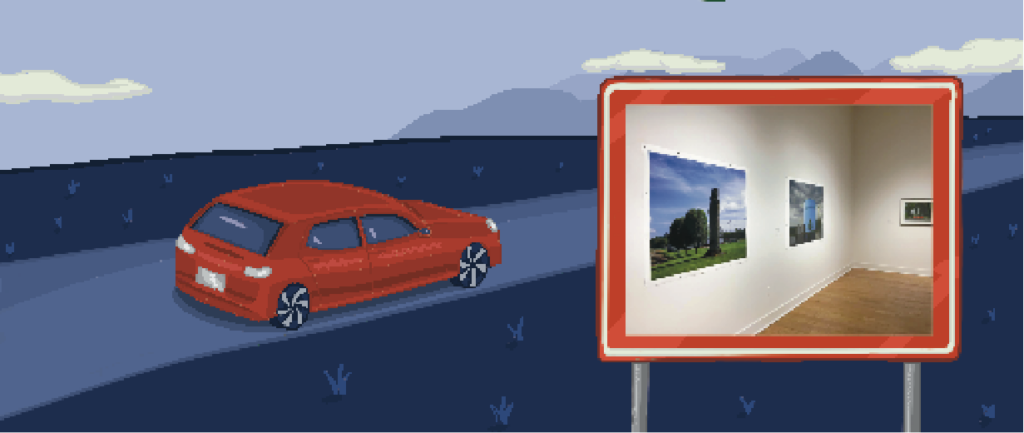NICK SPOSATO

From the mystique of fog-cloaked mountains in the Alaskan wilderness, to tractor-shaped mailboxes along a countryside road in Ohio, Frank Armstrong’s American Roadsides exhibit at the Fitchburg Art Museum takes viewers on an insightful cross country roadtrip.
Armstrong, an American landscape photographer and resident Research Scholar at Clark University, captured the photographs during his travels across the United States. His series focuses on the various landscapes throughout the country and examines the way Americans interact with them. As it depicts the range of what life in America looks like, particularly in rural America, it also showcases the commonalities that exist.
American Roadsides invites viewers to focus on that which might typically be overlooked. While some of the photographs evoke wonder through grand landscapes, others contain more ordinary subject matter. Whether it was unexpected, such as a church in the middle of a desert, or common, like a group of pink flamingos on a front lawn, there was always something intriguing and visually appealing to be found.
One image in particular comes to mind of fluorescent orange chairs stacked in a row. Through Armstrong’s photograph I was able to sit back and appreciate something I would not have given a second glance.
The photographs depicting the ordinary provided a more intimate view of each place. The small details, the decorations, and the signs tell part of a story. Although there are no people in the photographs, it’s easy to lose yourself in thought about the inhabitants of each place. What is daily life like there? What are the routines and norms? The photographs disclose something about each place while also instilling a sense of curiosity.
Armstrong sees his job as a photographer to reveal, to make the things that he has seen and felt known to the viewer. He certainly accomplishes this in American Roadsides with vibrant, crisp images, especially the six impressive 40 inch by 50 inch photographs.
As I stood in front of each photograph, I felt that I was suddenly in on a little secret, that I had a sense, an understanding, of a place that I have never actually visited. I felt what I imagine Armstrong might have felt when he captured each photograph. I chuckled when I came across the mannequin legs sticking out of a porcelain toilet. I was overcome with nostalgia seeing the fragmented remains of a tree that had been painted on a bathroom wall. I was shocked and disturbed to see a row of wolf carcasses strung up along a fence. That’s what is so powerful about this collection–it allows the viewer to share in Armstrong’s experience, to encounter that which he encountered.
To honor Armstrong’s legacy as an educator, the work of some of his former students are also featured in the show. It’s always fascinating to see the impact one artist can have on another, and it was exciting to view work from artists who were once in his classroom.
I was especially drawn to White House, a series by Catherine Wilcox-Titus who is now a California-based photographer, curator, and educator. Her series, which consists of black and white prints of deteriorating white houses, explores the concept of decay while also acting as a mirror for the current social and political atmosphere in America. Similar to Armstrong’s work, an important component of this series is the relationship between nature and human-made structures.
I ended the road trip with a greater sense of what life is like throughout the U.S and an appreciation for all the places, typical and unusual, where beauty might be found. American Roadsides also gave me some serious wanderlust, which says a lot because I am a homebody at heart. Maybe one day I will have the opportunity to experience the sights from the photographs in person, but for now I will hold on to my experience from the show. American Roadsides will be open until June 5.
For more information about the exhibition, please visit the Fitchburg Art Museum website at fitchburgartmuseum.org.





